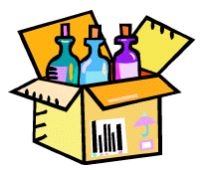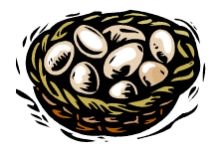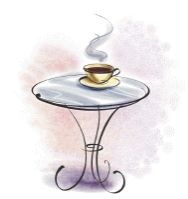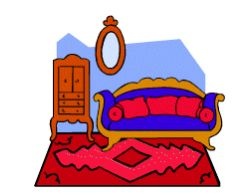Mother's Day also called Mother's Day has its origins in the early twentieth century, when a young American woman, Anna Jarvis, lost her mother and went into complete depression.Concerned that suffering, some friends had the idea of perpetuating the memory of the mother of Annie with a party.Annie wanted to be extended to honor all mothers, living or dead. Soon, the celebration and therefore Mother's Day spread by the United States and in 1914, the date was made official by President Woodrow Wilson: May 9.
The earliest celebration of Mothers day is mythological. In ancient Greece, the entrance of spring was celebrated in honor of Rhea, the Mother of the gods.The next record is in the early seventeenth century, when England began to dedicate the fourth Sunday of Lent to the English working mothers. That day, the workers took off to stay home with their mothers. It was called "Mothering Day", a fact which gave rise to "mothering cake", a cake for mothers who make the day even more festive.In the U.S., the first hints for the establishment of a date for the celebration of the mothers were given in 1872 by writer Julia Ward Howe, author of The Battle Hymn of the Republic.In Brazil, in 1932, then-president Getulio Vargas officiated at the date on the second Sunday of May. In 1947, Don Jaime de Barros Camara, Cardinal-Archbishop of Rio de Janeiro, has determined that this date also was part of the official calendar of the Catholic Church.In Portugal, the Mother's Day is celebrated on the first Sunday in May.Israel on Mother's Day is no longer celebrated, coming into existence Family Day in February.
Fixed dates
Country Day MonthMarch 3 GeorgiaMarch 8 Albania, Russia, Serbia, Montenegro, Bulgaria, Romania, Moldavia, BhutanMarch 21 Egypt, Syria, Saudi Arabia, UAE, KuwaitApril 7 GreeceMay 10 Mexico, Guatemala, Bahrain, Hong Kong, India, Malaysia, Qatar, SingaporeMay 15 ParaguayMay 26 PolandMay 27 Bolivia, Dominican RepublicAugust 12 Thailand (Birthday of Queen Sirikit Mom Rajawongse)August 15 Belgium and Costa Rica (Dia de Atención De Maria)December 8 Panama
English on the Web
Um site da escola,onde irei tentar tirar duvidas e matérias interressantes(mas deem sua opinião,sigam e comentem!!!)
domingo, 8 de maio de 2011
sexta-feira, 6 de maio de 2011
verb to be

Verbo To Be | Forma Negativa | Forma Interrogativa |
| I am (Eu sou, estou) | I am not | Am I? |
| You are (Você é, está) | You are not | Are You? |
| He is (Ele é, está) | He is not | Is He? |
| She is (Ela é, está) | She is not | Is she? |
| It is (Ele/Ela é, está para coisas ou animais) | It is not | Is it? |
| We are (Nós somos, estamos) | We are not | Are we? |
| You are (Vocês são, estão) | You are not | Are you? |
| They are (Eles são, estão) | They are not | Are they? |
Confira alguns exemplos:
Afirmativo
You are a student (Você é um estudante).
They are students, too. (Eles são estudantes, também).
We are Brazilian. (Nós somos brasileiros).
Mr. Smith is in the office. (Sr. Smith está no trabalho).
They are students, too. (Eles são estudantes, também).
We are Brazilian. (Nós somos brasileiros).
Mr. Smith is in the office. (Sr. Smith está no trabalho).
Negativo
We aren't in Canada now. (Nós não estamos no Canadá agora).
I'm not a teacher. (Eu não sou um professor).
I'm not a teacher. (Eu não sou um professor).
Interrogativo
Are they inteliggent? (Eles são inteligentes?)
Am I Brazilian? (Eu sou brasileiro?)
Who Am I? (Quem sou eu?)
Am I Brazilian? (Eu sou brasileiro?)
Who Am I? (Quem sou eu?)
can e can´t
- I can beat you (eu posso vencer você)
Para fazer a negativa, basta adicionar o NOT:
- I can not (cannot, can’t) beat you (eu nao posso vencer você)
Na interrogativa, o CAN fica antes do sujeito principal:
- Can I beat you? (eu posso vencer você?)
No futuro do pretérito, o CAN toma forma de COULD (poderia):
- You could be better than you are (você poderia ser melhor do que é)
Can't
O verbo can't significa não poder fazer algo,conseguir ser capaz:
- I can't beat you (Eu não posso vencer você)
quarta-feira, 4 de maio de 2011
Curiosidades
VOCÊ SABIA QUE.... |
|
Prepositions
Preposições in, on e under (lugar)
- n, on e under são preposições comumente usadas para comunicar posição ou lugar. In e on, em particular, são usadas de várias outras formas, mas aqui vamos ver seu uso relativo a posição.
- In é muito usada para expressar "dentro de" ou "em". Veja os exemplos abaixo:

The bottles are in the box.
[As garrafas estão na (dentro da) caixa.]

The eggs are in the nest.
[Os ovos estão no (dentro do) ninho.]
- On também é geralmente traduzido como "em". Na maioria das vezes, significa que algo está sobre uma superfície. Por exemplo:

There's a cup of coffee on the table.
[Há uma xícara de café na (sobre a) mesa.]

There's a mirror on the wall.
[Há um espelho na (sobre a) parede.]
- Under pode ser traduzido como "sob" ou "embaixo de":

The blue book is under the red book.
[O livro azul está em baixo do livro vermelho.]
- Veja que em todos os exemplos acima usou-se on the, in the e under the. The é o artigo definido no inglês, e pode significar o, a, os ou as.
No exemplo The bottles are in the box, estamos dizendo que as garrafas estão dentro da caixa ouna caixa (é uma caixa específica). Se estivéssemos falando de uma caixa qualquer, indefinida, usaríamos o artigo indefinido:
The bottles are in a box. [As garrafas estão em uma caixa.]
- De qualquer forma, usamos um dos artigos (definido ou indefinido) para distinguir de algum modo a caixa, mesa, parede, etc de que estamos falando (veja os exemplos dados no início desta lição). Poderíamos também usar this ou that, por exemplo:
My book is on that shelf. [O meu livro está naquela estante.]
O importante é ter atenção para evitar escrever algo assim:
The bottles are in box. [As garrafas estão em caixa.]
There's a mirror on wall. [Há um espelho em parede.]
My book is on shelf. [O meu livro está em estante.]
www.inglesonline.com.br
Assinar:
Postagens (Atom)